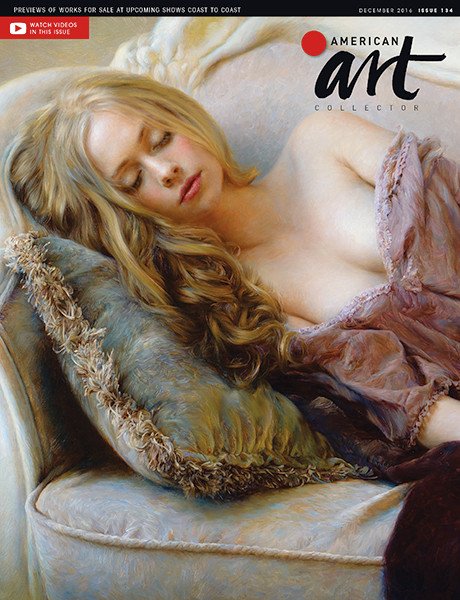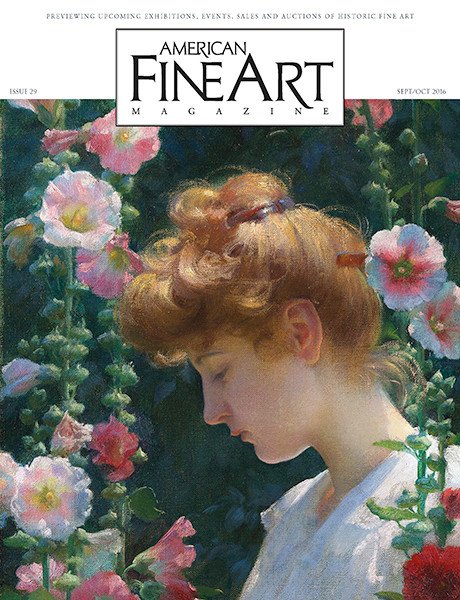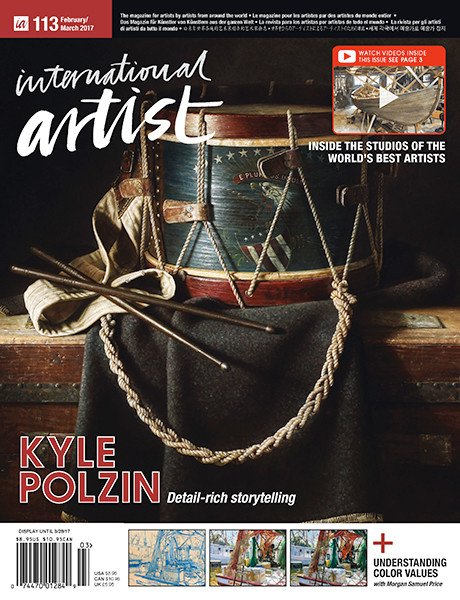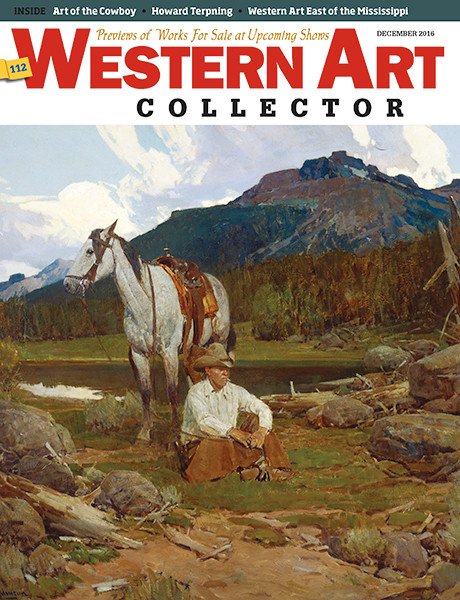 Hollis Chitto (Mississippi Choctaw/Isleta Pueblo/Laguna Pueblo), beaded bandolier bag
Hollis Chitto (Mississippi Choctaw/Isleta Pueblo/Laguna Pueblo), beaded bandolier bag
There are dozens of artists entered into the 2024 beadwork/quillwork category. This is the single best opportunity in the world to witness mastery because so many beadwork communities are represented at once. There are many beadwork styles, including those that have leaned into contemporary explorations of color play and design. However, it is important to uplift artists like Hollis Chitto, Leith Mahkewa and Vashti Etzel who have—and continue—to master their unique tribal styles while also pulling those styles into contemporary existence.
Hollis Chitto (Mississippi Choctaw/Isleta Pueblo/Laguna Pueblo) has been beading since he was 10 years old. His humble nature always credits his parents, both of whom are artists who have taught him “how to see the world.” As a master of symmetry and color, Chitto’s work has transformed from more predominately flat women’s bags adorned with bold florals, to his more recent Mississippi Choctaw bandolier bags, which provide a larger canvas for Chitto’s creativity and skills.
 Hollis Chitto (Mississippi Choctaw/Isleta Pueblo/Laguna Pueblo), Napakanli Um Okla Imma (Flowers for My family), beaded bandolier bag. Best of Show, 2024 Heard Museum Guild Indian Fair & Market.
Hollis Chitto (Mississippi Choctaw/Isleta Pueblo/Laguna Pueblo), Napakanli Um Okla Imma (Flowers for My family), beaded bandolier bag. Best of Show, 2024 Heard Museum Guild Indian Fair & Market.
As a researcher, Chitto explains that though they’re rare to find in historical collections, the Choctaw bandolier bags came from the rich history of the Five Civilized Tribes (Cherokee, Chickasaw, Choctaw, Creek and Seminole) in the mid-19th century. These communities had direct access to the finest trade items and were brilliant in sharing ideas. In fact, during this era, a lot of the shapes (beadwork and applique) were created and can be seen across these communities in the southern region. Through this inspiration, the Mississippi Choctaw style became bold, with white ribbon work, or beadwork, usually over a dark blue or red wool to create graphic impact.

Chitto explains that Mississippi Choctaw don’t have a lot of beadwork on their clothing, but more so on accessories. Clothing and accessories rely heavily on red wool with applique, embellished with beadwork designs. Beadwork can be found on accessories like the bandolier bags, netted collars, medallions, the beaded pins on women’s shoulders that hang down their backs and the gorgeous combs on top of their heads.
 Leith Mahkewa (Haudenosaunee/Hopi/Tewa) working in her studio.
Leith Mahkewa (Haudenosaunee/Hopi/Tewa) working in her studio.
His 2024 Heard Indian Fair and Market Best of Show winner, Napakanli Um Okla Imma (Flowers for My Family), is a pristine example of the convergence of the historical pasts he respects, while simultaneously bringing his “work forward—because we adapt.” Napakanli Um Okla Imma was a way for Chitto to “bring flowers to [his] family.” He explains, “They’re already gone, but I’ve learned their techniques.” Along the thick strap, the white “saw tooth style” beadwork edges various aspects; this stitch is done with two beads at a time, catching every other bead to create the “saw tooth” shape. Another critical Choctaw beadwork design on the strap are the bold beaded stickballs that are done with white beads atop dark blue wool.
Chitto doesn’t talk about himself without talking about his grandmother, Bernice Chitto, who undoubtedly would have been a SWAIA legacy artist in her own right. Carrying her legacy, he explains, “the coolest thing about being a Native artist is we get to use our family and tribal designs, but we’re also us. These things have shaped us. And it’s important enough to me that I’m still doing it, and I hope I never stop because I love it so much. It’s not the easiest [art form], certainly not the quickest, and you have to really love it. That’s how you tell beadwork is good because you can tell they really love doing it.”
 Leith Mahkewa (Haudenosaunee/Hopi/Tewa), I’m Not Just a Toy!, small cradleboard with doll, 2023, pine-wood cradleboard with carved back, Haudenosuanee-raised beadwork, antique bead size 18, soft handmade doll dressed in traditional regalia, 14 x 6 x 4”
Leith Mahkewa (Haudenosaunee/Hopi/Tewa), I’m Not Just a Toy!, small cradleboard with doll, 2023, pine-wood cradleboard with carved back, Haudenosuanee-raised beadwork, antique bead size 18, soft handmade doll dressed in traditional regalia, 14 x 6 x 4”
Leith Mahkewa (Haudenosaunee/Hopi/Tewa) grew up just outside of Montreal in the Kahnawake community. She explains, “This is where my art blossomed, in this community. If I didn’t live here, I wouldn’t be doing what I’m doing because I learned from the masters in this region. This is something I’m meant to do.” As a master of raised beadwork, which is a regional indicator, Mahkewa is grounded in her own love for her needle and thread. “I’m only as good as my last piece…Don’t create art for other people, do it for yourself.”
Raised beadwork, as Mahkewa explains, isn’t the original style of the region. Moose hair tufting and geometric quillwork were traditionally practiced. And with the introduction of seed beads through trade, flat geometric beadwork would adorn clothing and regalia. This style of beadwork involves small beads done in linework techniques, meaning the beadwork relies on lines of color to create impact. Mahkewa says when she is practicing linework, she “thinks about generations ago who was doing this work in the dark. Not the young people, but the elders who had the ability to do this work.”
 Leith Mahkewa (Haudenosaunee/Hopi/Tewa), Cradleboard #1- Inaugural (detail), 2024, beads: glass, wampum, 24k gold-lined beads, sterling silver plated, copper lined, turquoise, moonstone, carnelian, Swarovski crystal, red hearts and antique 17 and 22 beads, with basswood, white ash, hand-tanned and smoked deer hide, cotton velvet, cotton calico fabric, raw hide, raw hide brass sequins and brass antique nails, 32 x11 x13”
Leith Mahkewa (Haudenosaunee/Hopi/Tewa), Cradleboard #1- Inaugural (detail), 2024, beads: glass, wampum, 24k gold-lined beads, sterling silver plated, copper lined, turquoise, moonstone, carnelian, Swarovski crystal, red hearts and antique 17 and 22 beads, with basswood, white ash, hand-tanned and smoked deer hide, cotton velvet, cotton calico fabric, raw hide, raw hide brass sequins and brass antique nails, 32 x11 x13”
The Victorian era, marked by heavy trade in the northeast, influenced the transition into what would be known as raised beadwork, which often highlights winged birds accentuated by florals and foliage. The stitching involves strategic placement elevating the beads to sit above, instead of flat against the material. The style adapted based on the exposure to what the beadworkers had access to, like taffeta, wool, ribbon, white and crystal color beads, and the era of primary color beads. The timeline progressed from ornate beadwork on clothing and regalia, into the souvenirs the region is often known for, including handbags, pillows and other non-functional items.
 Leith Mahkewa (Haudenosaunee/Hopi/Tewa), Reminder of a Milder Season, medallion, 2024, hand-tanned and smoked deer hide, glass seed beads, rose quarts and metal spacers, 12 x 4”
Leith Mahkewa (Haudenosaunee/Hopi/Tewa), Reminder of a Milder Season, medallion, 2024, hand-tanned and smoked deer hide, glass seed beads, rose quarts and metal spacers, 12 x 4”
This beautiful style of beadwork has detailed differences, including color and design, depending on where the beadworker learned. Mahkewa learned from a strong community of Mohawk women and as she talks about her work, she emphasizes they are the backbone of her journey. “It is all dependent on the generosity and mentorship of women before you who have kept this art form alive.” Mahkewa’s personal color palette is a refreshing blend of crystals and complementary colors. She never repeats herself, every piece is a one-of-a-kind design and color combination, all of which are fully functional items.
 Vashti Etzel (Dene), Arctic Beauty accordion straps, 2024, caribou hair tufting on velvet fabric, vintage and contemporary beads, fresh-water pearl and obsidian gemstone accents, 24kt gold-plated beads, leather accordion strap, 14 x 3 x 2”
Vashti Etzel (Dene), Arctic Beauty accordion straps, 2024, caribou hair tufting on velvet fabric, vintage and contemporary beads, fresh-water pearl and obsidian gemstone accents, 24kt gold-plated beads, leather accordion strap, 14 x 3 x 2”
Mahkewa received a well-deserved Best of Show at the 2024 Ohi:yo’ Art Market for a traditional Haudenosaunee cradleboard she completed during her residency at Western University. The board is hand carved from basswood and white ash. The front wrap is adorned with detailed linework in hues of crystal beads. The back of the board is a vibrant display of raised beadwork. The balance of color, shape and floral directionality creates a breathtaking testimony of beadwork culture—and of her love of this work. “I hope people understand that love and care is put into it. The pieces are a true reflection of my creative being without bounds. The work you see, I’m very proud of […] There is intention behind it. It’s meant to be worn, it’s meant to live. They have soul. They are living beings. If it’s pretty, great.”
Vashti Etzel comes from the unceded traditional territory of Kaska Dene, Ross River, Yukon. She is Shuhta Dene (Mountain Dene) of Northwest Territories, Kaska Dene of Yukon Territory from her mother’s side and Chipewyan, Cree from her father’s side. As a master of moose hair and caribou tufting and beadwork, her work is a refreshing display of movement, flow and vibrance. This will be her first of many successful years at Santa Fe Indian Market.
 Vashti Etzel (Dene) wearing autumn-inspired caribou tufted earrings, 2023.
Vashti Etzel (Dene) wearing autumn-inspired caribou tufted earrings, 2023.
Before colonization, Dene communities of the Northwest Territories had distinct styles of beadwork, quillwork and caribou or moose hair tufting. These distinct differences helped differentiate communities and relatives. Early beadwork techniques included florals that were beaded in a more intentional movement, whereas now florals are beaded in circular rows of beads. Caribou and moose hair colors included red, black, blue, white and yellow, all achieved and dependent upon the natural dyes accessible. Other natural materials were tied to the rich natural environments of the territories, including spruce root, birch bark, fur, bones, caribou hide and moose hide.
 Vashti Etzel (Dene), Delįnge Kē moccasins, 2024, caribou hair tufting on traditional home-tan moose hide, contemporary beads, gemstone accents and commercial-dyed fox fur trim (light turquoise), 10½ x 4½ x 3”
Vashti Etzel (Dene), Delįnge Kē moccasins, 2024, caribou hair tufting on traditional home-tan moose hide, contemporary beads, gemstone accents and commercial-dyed fox fur trim (light turquoise), 10½ x 4½ x 3”
Etzel shares that her late grandfather told her that during the residential school era, priests burned cultural belongings. Despite assimilative tactics, Dene beadworkers adapted and created a contemporary resurgence of their beadwork and tufting practices. Etzel’s work explores the contemporary practice that pays homage to these histories. Her brilliant use of materials and elements that come from the land and animals is pure artistry. Her work mixes contemporary seed beads with vintage beads, semi-precious stones, quillwork, antlers and caribou hair tufting, all adorned on a traditional home tanned moose hide. Her color palette is vibrant—she’s mastered the skill of placing vibrant colors next to calming complementary colors to create balance and harmony. Her tufting skills are detailed and precise, a skill that can take years to learn; tufting requires gathering the hair, laying precise stitches and gently trimming the hair to the desired shapes. The balance of tufting laid against beadwork creates depth, curiosity and excitement.
 Vashti Etzel (Dene), Ebéh dzídze (Summer Berries), caribou-tufted strawberry earrings with caribou-tufted blueberry cuff on home-tan moose hide.
Vashti Etzel (Dene), Ebéh dzídze (Summer Berries), caribou-tufted strawberry earrings with caribou-tufted blueberry cuff on home-tan moose hide.
Etzel talks about how beadwork is a way for her to remain connected with her late grandmother, Eva Etzel, who was known for her immaculate skills in embroidery, beadwork and quillwork. Now she is a culture bearer in. her own right, a cultural ambassador who is dedicated to continuing the legacy of her grandparents. “What I hope for others to understand about my style is that due to colonialism and the impacts of residential school…I am doing the research, I am immersing myself in our stories, visiting with elders, learning our language, all while finding what works for me and doing it all in a respectful manner. A lot of the materials I use are often harvested by myself with my family, gifted, trade or purchased from other indigenous families. As I learn more about our ways, you will witness the ways I will incorporate it into my work.”
The artists featured here are in the following booths: Hollis Chitto (LIN E 724), Leith Mahkewa (PAL S 223) and Vashti Etzel (CP 15).
Powered by Froala Editor

























































































































































